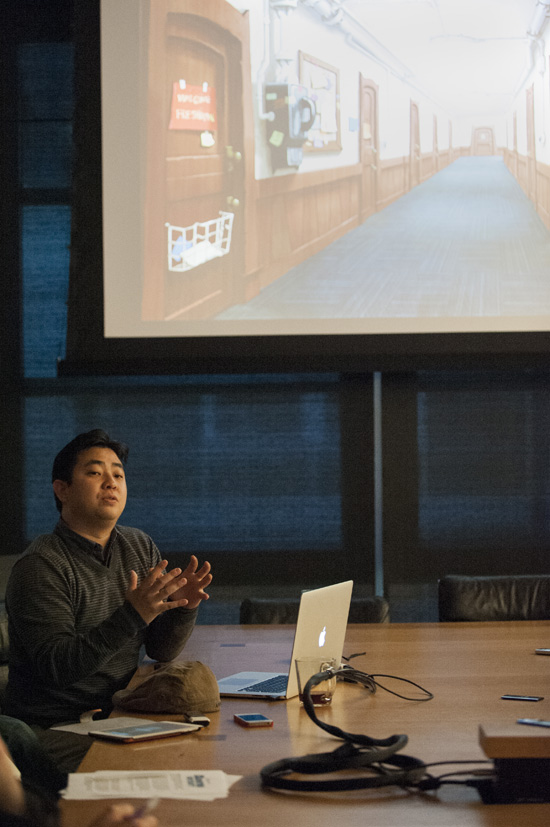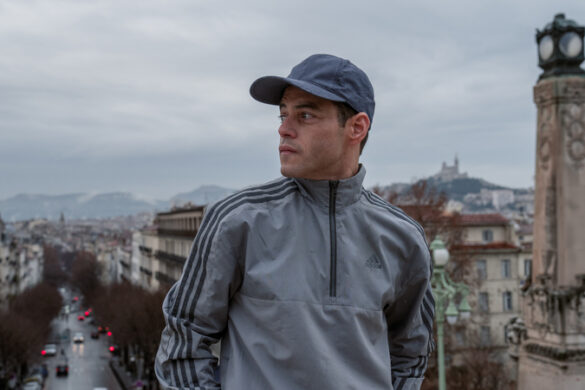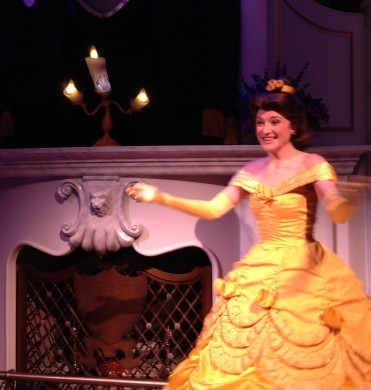* I attended an all-expense paid press trip courtesy of Pixar/Disney. The review is in our own words and is our opinion.
Have you sat through the credits of an animated film and noticed how many people are involved in creating that movie? Hundreds of Pixar employees worked on the upcoming Monsters University film. Remember when I enrolled in Monsters University? I’d like to give you a some extra highlights on how much input from each department was involved in creating Monsters University.

DRAMATIC ARTS: Bringing a Character to Life – Learn how the animation process works, and view an animation demo on a Linux machine.
Instructor: Scott Clark (Supervising Animator)
- Animators bring the characters to life. They are the actors and/or stunt people in the film that show the emotion, action and physicality of the characters.
- In the world of animation characters can only move in three different directions, Forward and back, up and down and side to side. You can also rotate those directions to create hundreds of variations.
- Every piece of Sulley’s skeleton has a joint. He is basically set up like a human except he has 4 fingers, three toes and a tail.
- Animators can control the “emotion” of muscles by using a spreadsheet of body controls and arms. There are hundreds of controls, shortcuts and splines that control every nod, tilt or head swing, etc.
- It takes days and even weeks to figure out seconds of footage.

Supervising Animator, Scott Clark talks to press about the animation process at Monsters University Long Lead Press Days. Emeryville, California. April 9, 2013 (Photo by Jessica Lifland/Pixar)
ANTHROPOLOGY 152: Monsterizing the World – Learn about creating and “monsterizing” the world of MU.
Instructors: Dice Tsutsumi (Shading/Lighting Art Director) & Robert Kondo (Sets Art Director)
- “Monsterification” is the fun detail about the monsters world that was brainstormed when designing the campus.
- Monsters architects created the campus to accommodate every size and type of monster. Doors come in different sizes as well as water fountains and steps. Some monsters actually fly or swim. Schools were created to accommodate them as well.
- Subtle “monsterifications” are found all over the campus. Look for faces designed into the buildings and windows. Vegetation has spikes and horns motifs to give the campus an extra “monstery” look.
- Everything is powered by screams. Scream power becomes a part of the esthetic of hallways and rooms. Everything that needs power needs a pipe.
- Color and lighting is designed to support the story. Color strip is a visual road map of the film. It keeps track of emotion, time of the day, weather and the season. The use of light and color indicates the status of friendship. Mike is clearly behind talented Sullivan. Mike is in the shadow as the semester progresses. Mike catches up and passes Sulley and leaves him in the shadow. Careful lighting and color choreography throughout the film allows viewers to embrace the story and try to do it subtly and carefully.
- All of this relates back to the idea that MU’s history is steeped in scaring. Scaring is what Monsters University is known for. They wanted to imply that many important scarers walked the halls

Shading/Lighting Art Director, Dice Tsutsumi talks to press about “monsterizing” the world of MU at Monsters University Long Lead Press Days. Emeryville, California. April 9, 2013 (Photo by Jessica Lifland/Pixar)

Sets Art Director, Robert Kondo talks to press about “monsterizing” the world of MU at Monsters University Long Lead Press Days. Emeryville, California. April 9, 2013 (Photo by Jessica Lifland/Pixar)
SOCIOLOGY 203: The Deconstruction of a Character – Learn about the design of college-age Mike & Sulley plus creation and design of new characters in the film.
Instructors: Ricky Nierva (Production Designer), Jason Deamer (Character Art Director)
- A big challenge was creating younger college age versions of returning characters. Characters were slimmed down. Sulley’s hands and feet were adult proportion so he could grow into them. His blemishes were removed. His color was saturated and he was given a tussled look of college hair. Mike is wearing a retainer and hat. but the visual cues would tell you that these are younger monsters attending Monsters University.
- There are six body types of monsters on the campus.
- Tons of research went behind creating Squishy. He is based on Japanese Mochi candy.
- Dean Hardscrabble was the most challenging character. The wanted to give her a scholastic looking. In her heyday, she was the top scarer in Monstropolis.
- She was originally a male character and evolved into a female. She went through many transformations as a bat, a snake, a crab, a butterfly, a scorpion and eventually a giant venomous centipede. Centipedes move with grace and the designers wanted to balance her out with scariness and elegance.

Character Art Director, Jason Deamer talks to press about character design at Monsters University Long Lead Press Days. Emeryville, California. April 9, 2013 (Photo by Jessica Lifland/Pixar)
ENGLISH 101: How to Tell a Great Story – Students learned Learn about the story process and how to draw a character from MU.
Instructor: Kelsey Mann (Story Supervisor)
- Kelsey Mann worked on the Monsters University project for 4 years.
- Story process begins on a big whiteboard followed by hours and hours of discussion between the story supervisor, writers, directors. Writers then go off and write pages and story artists create the pages. Finally an idea gets pitched.
- Kelsey used a Wacom tablet to sketch out pitches with an in-house program called Pitch Doctor. He also uses Photoshop to create layers of drawings to use in his pitch.
- After the pitch the story animators receive notes and update material and the bounces back and forth between editorial.
- The goal of a story animator is to make the storyline better and better.

Story Supervisor, Kelsey Mann talks to press about the story process and gives a drawing lesson at Monsters University Long Lead Press Days. Emeryville, California. April 9, 2013 (Photo by Jessica Lifland/Pixar)
PHYSICS 250: Global Illumination – View a presentation on the use of Global Illumination in MU and The Blue Umbrella.
Instructors: Jean-Claude (JC) Kalache (DP-Lighting), Sanjay Bakshi (Supervising Technical Director) & Christine Waggoner (Simulation Supervisor)
- The School of Rendering are responsible for putting the pixels on the screen.
- The Render Farm is a room full of computers. 100 million CPU hours were spent rendering Monsters University. To put that into perspective if you were to buy one computer it would take over 10,000 years to render a movie. Pixar has 24,000 computers so it takes a couple of years to render. 24 frames in every second, 90 minutes in a movie. Each of those frames takes about 29 hours to render.
- 400 characters were built to fill frames with awesome University life and activities. On average there are 25 characters in every shot. An average Pixar film has less than 10 characters.
- Simulation is motion calculated by software. This motion is too complex to typically animate by hand. For example, there are too many hairs on Sullivan to animate by hand and folds on clothing are too complex to animate manually. Simulation is adding to create overall richness.
- 89% of the film for Monsters University is simulated. The team strive for naturalistic motion in the film. Adding texture like hair, cloth, paper, bags, grass, trees allow a seamless vision on the Monsters University world. If you don’t notice “it” then the job was done.
- Monsters Inc vs Monsters University fact: Only one hairy character could be in a Monsters Inc frame vs 25% of the characters in Monsters U. Monsters Inc had one simulated garment which was boo’s T-shirt compared to 127 simulated garments in Monsters University.
- You will notice that there is limited contact between characters. Not a lot of hugging or carrying reduces complex scenarios in a scene.
- Sullivan has 5.5 million hairs.
- Global Illumination cover the technology to reduce lighting complexity. Every single shot in the movie has Global Illumination. Richness gets added to the shot. It’s uplifting.

(From left to right) Simulation Supervisor, Christine Waggoner, DP Lighting, JC Kalache and Supervising Technical Director Sanjay Bakshi talk to press about the technical challenges and achievements of the film at Monsters University Long Lead Press Days. Emeryville, California. April 10, 2013 (Photo by Jessica Lifland/Pixar)











7 comments
I thought the part about Dean Hardscrabble was so interesting when we were there! They really had a special fondness for making that character perfect, didn’t they?
These classes are awesome! Sign me up! LOL
I bet going t hrough that entire experience was a lot of fun and very educational too. I know, for one, I am truly looking forward to monsters University this summer… I loved the original and from the first moment I heard about this movie over a year ago now I couldn’t wait to see it.
So much work goes on behind the scenes, and its pretty incredible hearing it.
This experience seems incredible! I can’t wait to see Monsters this summer!
its neat how small changes like the spacer (or retainer? whatever that’s called) can make something as basic as an eyeball look so much older 🙂
Great post! You took me right back to that fabulous day. Thanks so very much!
I loved reading about your MU adventure. I’d love to take some of those classes!